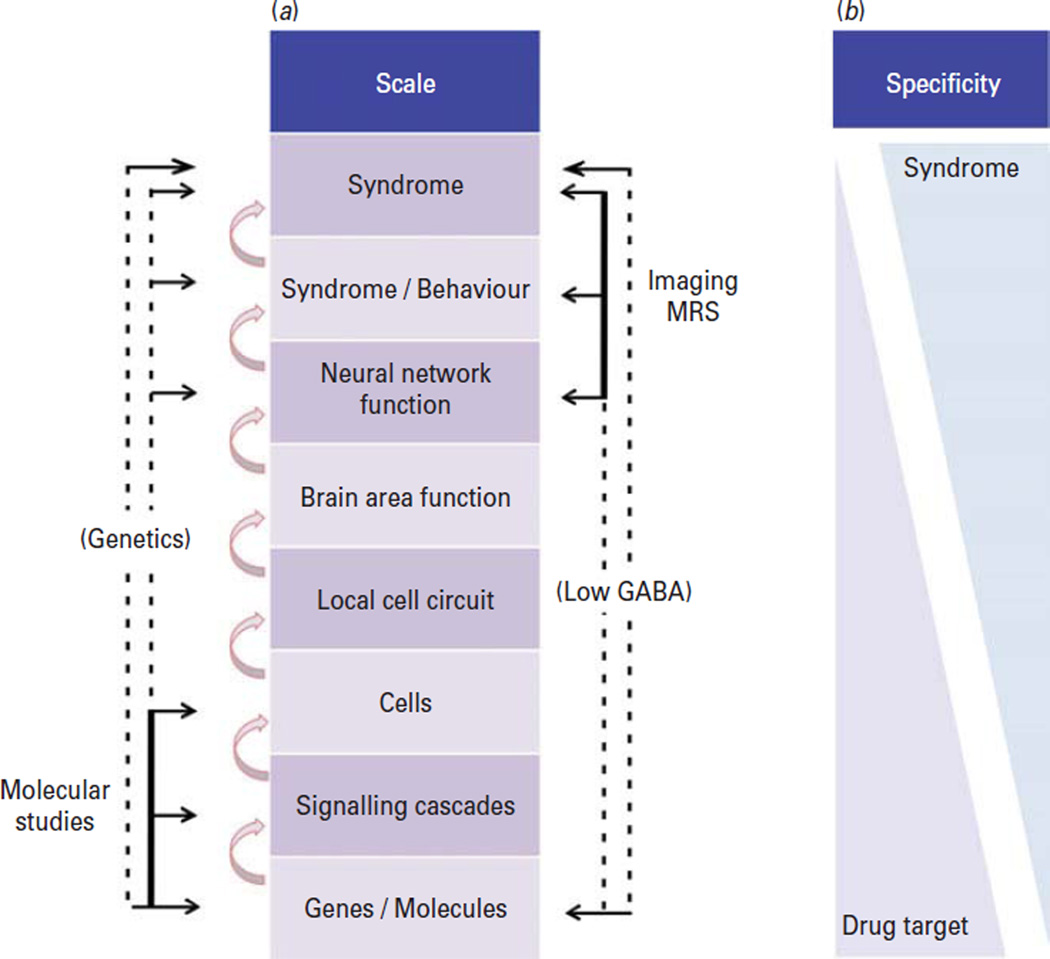Fig. 2.
A multi-scale biological perspective on mechanisms of depression and its relationship to specificity of drug treatment and diagnoses. (a) The functionality of complex biological systems emerges from the integration of events occurring across hierarchical biological scales, starting from the bottom with genes, molecules, cells, microcircuits, and neural networks. Each scale depends on the function of level below, and determines the function of the level above. Feedback and modulation occur across levels and from the environment (not shown). Brain functions, behaviours, and endophenotypes emerge at the neural network levels, which then define individual symptoms and syndromes. Molecular and brain imaging studies investigate opposite ends of the spectrum (b) and can only speculate on mechanisms underlying causal links between those opposite ends (dashed lines). More direct links are provided by molecular genetics and imaging magnetic resonance spectroscopy (MRS) studies, but these studies do not inform on changes at intermediate scales. This results in inverse correlations between specificities of findings for disease and molecular/pharmacological studies (b). Therapeutic drugs have high specificities for their molecular targets, but lowest specificities in terms of treating complex behavioural syndromes; conversely, imaging and associated studies have high syndromal specificity (due to the Diagnostic and Statistical Manual of Mental Disorders-based clinical diagnosis), but low molecular target specificity (due to low consideration of biological phenotypes in diagnosis). GABA, γ-amino butyric acid.

